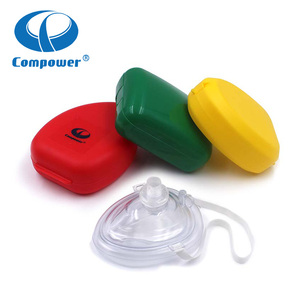Introduction to CPR Breathing Bag
The CPR breathing bag, also known as a bag-valve-mask (BVM), is an essential tool in emergency medicine. It provides a lifeline during critical situations where a patient is unable to breathe independently. This device helps rescuers deliver positive pressure ventilation to patients who are experiencing respiratory failure or cardiac arrest. As a crucial component of CPR kits worldwide, understanding its types, features, and applications can significantly enhance your emergency response capabilities.
Types of CPR Breathing Bags
CPR breathing bags come in various types, catering to different medical needs and scenarios. Here are the most common variants:
- Adult CPR Breathing Bag: Designed for use on adults and larger patients, these bags typically have a volume of 1,000 mL and require a specific mask size for an effective seal.
- Pediatric CPR Breathing Bag: Smaller in size with a volume of 500 mL, these bags are tailored for infants and children, ensuring the right fit and effective ventilation without excessive pressure.
- Neonatal CPR Breathing Bag: This reduces the risk of air trapping in fragile lungs, featuring a volume of 240 mL to provide suitable ventilation for newborns and premature infants.
- Disposable vs. Reusable Breathing Bags: Reusable bags can undergo sterilization and are often preferred in hospitals, while disposable bags are convenient for field use and reduce infection risks.
Function, Feature, and Design of CPR Breathing Bag
The design and functionality of a CPR breathing bag are integral to its performance in emergency situations. Here are the standout features:
- High-Quality Materials: Most CPR breathing bags utilize medical-grade materials that ensure durability and reliability during high-pressure situations.
- Self-Expanding or Manual Options: Depending on your training and preference, you can find both self-expanding models that reduce effort and manual bags that require more input from the rescuer.
- Facemask Design: Masks come in various shapes and sizes, equipped with a soft cushion for comfort and improving the seal on the patient’s face.
- Airway Support: Many models integrate an AMBU bag design that allows for a secure fit, ensuring that air is delivered effectively to the lungs.
Applications and Advantages of CPR Breathing Bag
The CPR breathing bag is not just a piece of equipment; it serves multiple vital functions in health care scenarios:
- Life-Saving Device: The primary application of the CPR breathing bag is during emergency situations when a patient's breathing has ceased, enabling immediate ventilation.
- Versatile Usage: These bags can be utilized in various settings, including hospitals, ambulances, and remote areas, making them versatile tools for first responders.
- Improved Ventilation Rates: Using a CPR breathing bag can significantly enhance oxygenation for patients in dire need, quickly stabilizing their condition until further treatment can be administered.
- Ease of Use for Trained Personnel: The design of most CPR breathing bags is user-friendly, allowing quick and effective intervention by trained professionals, paramedics, and even bystanders during emergencies.







































































































































































































